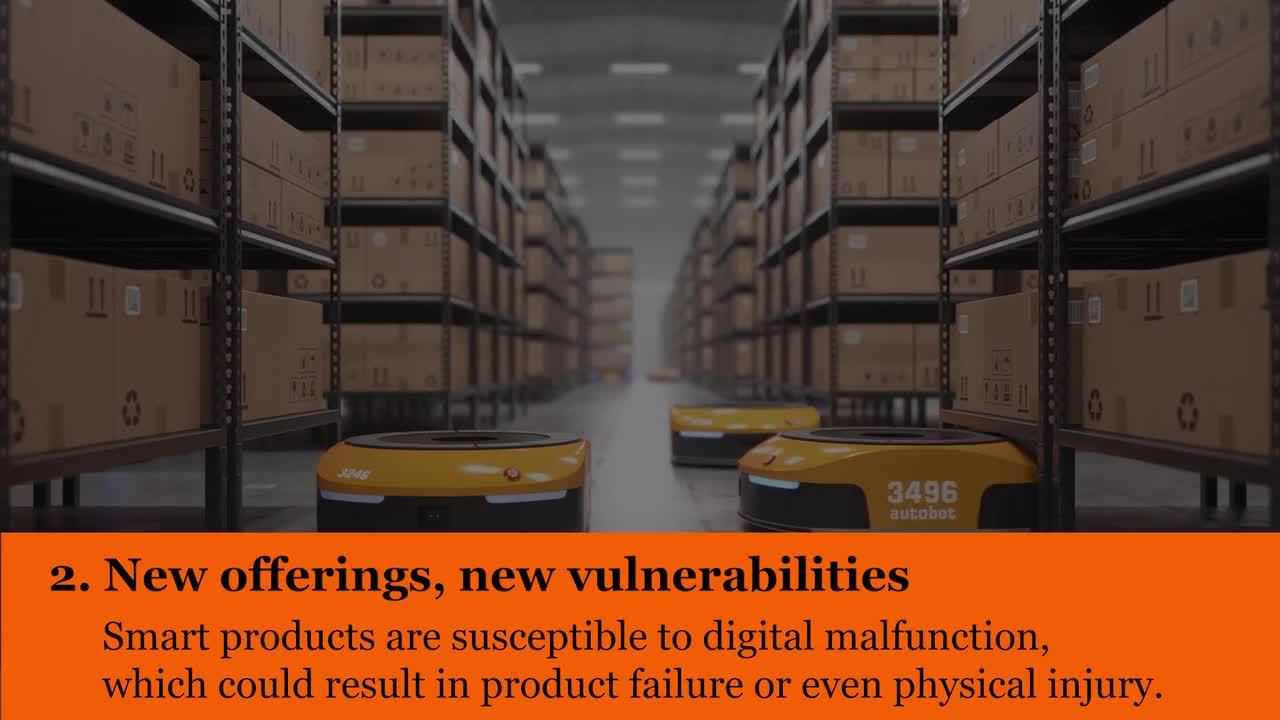How manufacturers in Singapore can future-proof their businesses: An external perspective

Widespread technology adoption has completely changed the way Singapore's manufacturers operate – including how and what they manufacture - and approach supply chain management.

Despite new challenges, heightened exposures and evolving risk profiles, many local manufacturers, particularly the small and medium-sized enterprises (SMEs), often take a reactive approach to managing risks. This lack of preparedness can cost them money and time, and even lead to business failure for smaller manufacturers.
In the face of potential disruptions, the first step to protecting your business is understanding what makes it vulnerable. It is critical to examine your business through the lens of the questions outlined below to gauge your readiness for the next crisis, no matter how big or small.
A modern factory may be more vulnerable to cyber threats than ever. Every digital touchpoint - from the network of connected devices on assembly lines right down to the small sensors installed in the final products - could expose your company to external cyber risks. Are you prepared for the worst?
- Have you created or updated your cyber incident response plan?
- Are you routinely testing your defenses and threat hunting to intercept potential cyber-attack attempts?
- Do you conduct structured reviews of the security levels of third parties and vendors you work with to ensure they have robust cyber security measures and policies in place?
- How prepared are you for business interruption, reputational damage and expenses that might arise from a cybersecurity incident?
- Are you confident that your existing insurance policies are enough to cover data security and privacy exposures?
Dependence on external suppliers is a significant source of exposure - the supply chain has many moving parts, and every vendor has its own set of vulnerabilities. Have you done enough to boost resilience of your…
-
Supply chain network
- Do you regularly review potential supply chain interruptions that could cripple your company?
- Have you established processes to mitigate potential vulnerabilities or the necessary recovery strategies during a supply chain failure?
- Have you created a contingency or recovery plan with the various parties in your supply chain network to ensure business continuity in the event of a disruption?
-
Supplier management
- Have you adequately diversified your supplier base to reduce the impact of the loss of a single or sole supplier?
- Before signing any contracts, do you perform a thorough vendor risk assessment?
- After onboarding a vendor, do you conduct diligent vetting, consistent management, and frequent reviews? Is the same approach used to manage other third-party manufacturers or subcontractors, warehouses, distribution centres, and transport and shipping partners?

Here are a few essential risk management best practices that every manufacturer should consider implementing:
- Put in place a robust risk management program and business continuity plan (BCP). If you don't currently have one, here are 5 steps to creating a BCP. If you do, be sure to routinely review, update, and adjust the plan.
- Make sure you have the necessary coverage to absorb the negative impact of a cyber-attack and help your company quickly bounce back into action after an incident.
- Maintain an inventory of critical materials and keep a safety stock of supplies for short-term interruptions such as unexpected shortages of materials and supplies. This is especially important if you run on just-in-time or on-demand production schedules.
- Collaborate with a risk specialist to create tailored insurance strategies that can help protect your company's operations and business performance.
After more than a year of dealing with pandemic-related and other disruptions, local manufacturers have begun to appreciate the importance of being prepared to tackle issues confidently. To navigate an uncertain future, manufacturers must be more attuned to the value of risk management, assess what they have in place as well as what's needed to address emerging risks.
Now is the time to prioritise risk management and not leave it on the table or to chance.
Not sure how to get a head start in assessing and/or managing existing and emerging risks specific to your organisation? Speak to your insurance broker/agent or our risk experts to ensure you are prepared and ready for any eventuality.
Top-of-mind challenges for Singapore's manufacturers
The multi-faceted risks faced by local manufacturing companies can play into their financials and impact daily operations. Learn more about this increasingly diverse set of internal and external risks, and what it means for manufacturers.


No part of this article may be reproduced in any written, electronic, recording, or printed form without written permission of Chubb.
Disclaimer - The content of the above article is not intended to constitute professional advice. Although all content is believed to be accurate, Chubb Insurance Singapore Limited (Chubb) makes no warranty or guarantee about the accuracy, completeness, or adequacy of the content of this article. Users relying on any content do so at their own risk.

Have a question or need a quote?
Contact us to find out how Chubb Assembly can help you get covered against potential risks